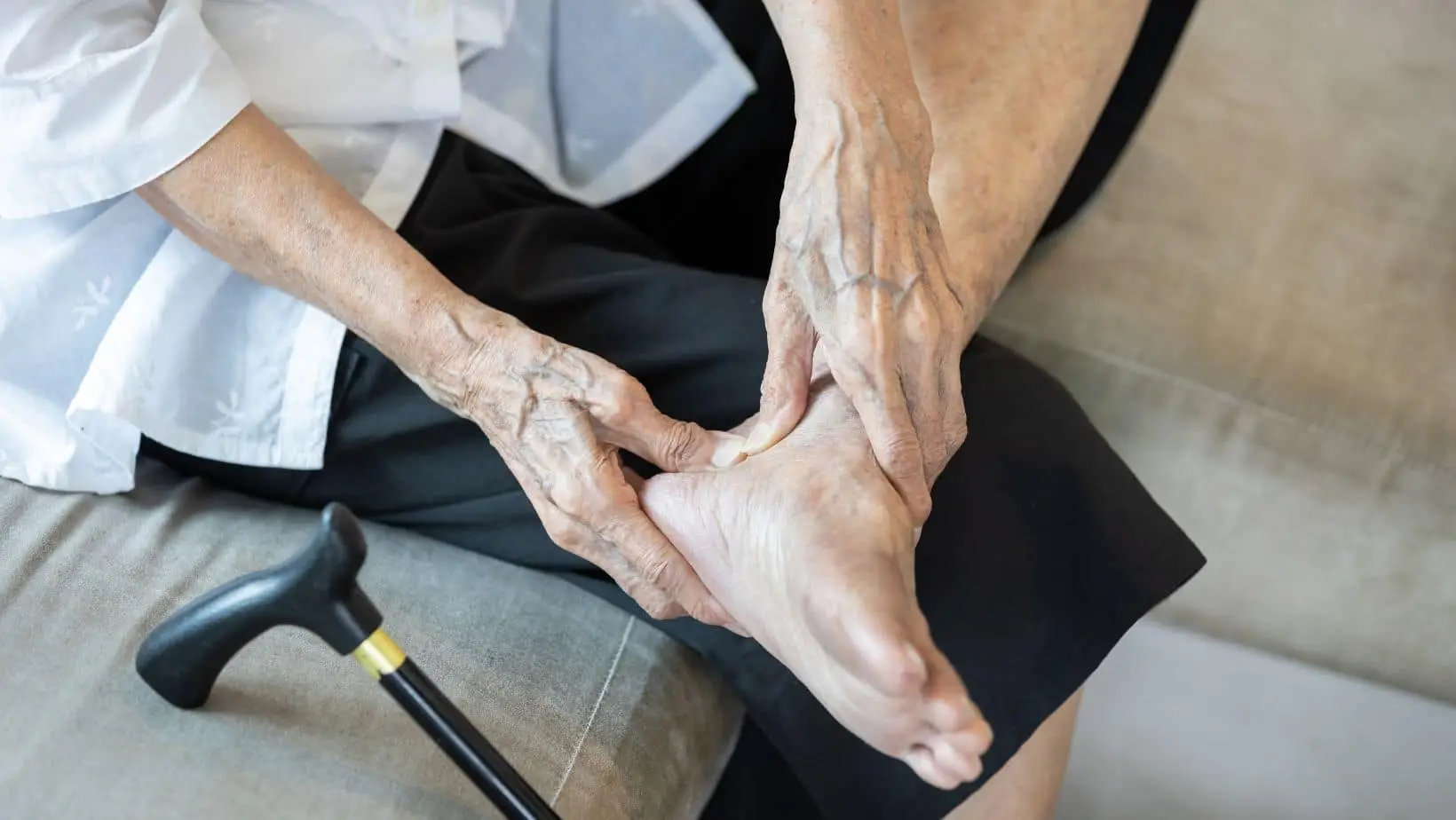

A Guide to Understanding and Managing Chronic Foot Pain
Ah, foot pain—a silent thief of joy, comfort, and mobility. No matter who you are, be it an elderly person slowed down by the years, an athlete pushing their limits, or simply someone who’s unlucky with the genetic lottery, foot pain can be a debilitating companion. It robs you of the simple pleasure of walking barefoot on grass, the exhilaration of a good run, or the serenity of yoga practice. But how much do you really know about the aches that echo in your soles? And, more importantly, how can you reclaim your steps from the clutches of discomfort?
In this guide, we’ll amble our way through the labyrinth of chronic foot pain, exploring the underlying causes, the myriad treatment options, and the art of self-care. But we won’t stop there. We’ll take a leap of faith, exploring how psychology can stand shoulder-to-shoulder with traditional medicine to quell the agony. Lace up your shoes; we’re about to take the first step towards understanding and managing that persistent ache in your feet.
The Anatomy of Foot Pain: Diving into the Depths of Discomfort
Understanding chronic foot pain begins with peeling back the layers of the issue. The foot is a complex structure, comprising 26 bones, 33 joints, and over 100 ligaments, tendons, and muscles—all working in harmony to support our weight, absorb shock, and act as a lever to propel the leg forward.
Aches, Sprains, Strains: What’s the Difference?
Chronic foot pain doesn’t necessarily have a single origin—it could stem from a myriad of injuries, abnormalities, or degenerative diseases. Stress fractures, plantar fasciitis, and Achilles tendinitis are common culprits that can transform a simple step into an ordeal.
Sprains and strains are frequently misconstrued, but they signify distinct injuries. A sprain is a stretch and/or tear of a ligament, the tough band of fibrous tissue that connects the bones. Whereas a strain is a twist, pull, or tear of a muscle or tendon—a tough cord of tissue that connects muscle to bone.
Plantar fasciitis is the inflammation of the thick band of tissue (plantar fascia) that runs across the bottom of your foot and connects your heel bone to your toes. It’s one of the most common causes of heel pain, especially in runners and overweight individuals.
Achilles tendinitis, on the other hand, is an overuse injury of the Achilles tendon, the band of tissue that connects calf muscles at the back of the lower leg to your heel bone. It’s a common injury that can affect anyone, even inactive individuals.
Understanding the root cause of your foot discomfort is the first stride towards finding a remedy. It might involve a consultation with a podiatrist, a physiotherapist, or an orthopaedic specialist.
Striding into Treatment: The Spectrum of Solutions
The good news is, you’re not alone on this trek. A wealth of treatment options is available, each tailored to address specific maladies. Rest, Ice, Compression, and Elevation (RICE) is the go-to for acute injuries and can often provide relief for chronic conditions.
Getting a Grip on Footwear
Your shoes are your foundation, and finding the right pair can make a world of difference. For those suffering from chronic foot pain, customized orthotic insoles and shoes are game-changers. By providing individualised support and cushioning to the unique contours of your feet, orthotics can alleviate pressure points and restore natural alignment.
Clinchers and gels pads can alleviate pain for those with conditions such as bunions and hammertoes. These can be slipped into different styles of shoes to provide immediate, everyday comfort.
Physical Therapy: Getting Feet Back on Track
Physical therapy is the sensei of re-education, guiding your feet back to proper form and function. Therapists can prescribe personalised exercises to strengthen foot muscles, improve flexibility, and promote balance, which is crucial in preventing future injuries.
Injections of Relief
Corticosteroid injections are powerful anti-inflammatories that can provide temporary relief for conditions like plantar fasciitis. However, these are not without risks and should be discussed with your healthcare provider, weighing the pros and cons.
The Surgical Stride
For some, foot pain is not just an inconvenience but a constant, unyielding adversary. In cases of severe deformity or persistent pain unresponsive to conservative treatments, surgery may be the only path to lasting relief. This can range from minimally invasive procedures, such as arthroscopy, to complex reconstructive surgeries.

The Patient’s Stride: Walking with the Pain
Managing the Misery
It’s a tough road, but the way you anchor your mentality can either ease or exacerbate the discomfort. The mind is a powerful medicine, and learning to manage the psychological aspect of chronic pain can greatly improve your quality of life.
Active Release Techniques
Active release techniques (ART) may be beneficial for conditions such as plantar fasciitis, aching arches, and shin splints. ART involves the movement, stretching, and massaging of tissues to break up scar tissue and improve the function of muscles, ligaments, and tendons.
The Role of Psychology in Pain Management
The human mind is a marvel, capable of exerting immense influence over the body. Psychological interventions such as cognitive-behavioural therapy (CBT) can help patients reframe their thoughts and behaviours about pain. Guided imagery, meditation, and relaxation techniques offer a serene respite from the flurry of discomfort.
The Stride Swept Away: Preventing Future Pain
Prevention is the ultimate solace. By adopting healthy habits, you’re not just alleviating current woes but fortifying your foundation for the future.
Strength and Conditioning
Regular exercises that focus on strength, balance, and flexibility are essential to protect your feet from injury. Simple routines that target the feet and lower legs can work wonders in staving off chronic pain.
Listen to Your Body
In this cacophony of modern living, the body is often relegated to the background. By tuning in to the whispers of discomfort early on, you can dodge the bullet of a potential injury.
Foot Checks
Regularly examining your feet for any changes or signs of trouble is part of responsible self-care. Addressing issues early can prevent them from evolving into chronic pain conditions.
Medicine and Mind Joining Forces
The final chapter in our chronicle of foot pain is the fusion of medicine and psychology. Traditionally viewed as disparate realms, they can serve as complementary tools in the management of chronic discomfort.
The Mind-Body Connection
Understanding the intricate dance between the mind and body in experiencing pain is paramount. The mind can magnify or mitigate pain perception, and by tuning into the deeper connections, you can unlock new paths to relief.
Holistic Approaches
Taking a holistic approach to foot care means looking beyond the anatomical structures and considering the person as a whole. This perspective underpins treatments that incorporate mental, emotional, and social aspects of life, which can impact the experience of foot pain.
The Winding Path to Wellness
No two journeys are alike, and navigating chronic foot pain is no exception. By blending conventional treatments with the wisdom of psychology, you’re not just treating a symptom but addressing the whole person—a crucial step in the pursuit of a pain-free existence.
A guidepost for those with tired, aching feet, this exploration of chronic foot pain is as much a scientific dissection as it is a narrative of human resilience. It’s about how we adapt, push forward, and find relief in the unlikeliest of places.
In closing, whether you’re an athlete wrestling with a stubborn injury, an elder struggling with the weight of years, or simply an individual navigating the rocky terrain of life, remember that the first step towards managing chronic foot pain is the one you choose to take. With the right knowledge and support, the horizon of a pain-free life beckons, and each stride brings you closer to that symphony of being—body, mind, and foot—working in harmony.